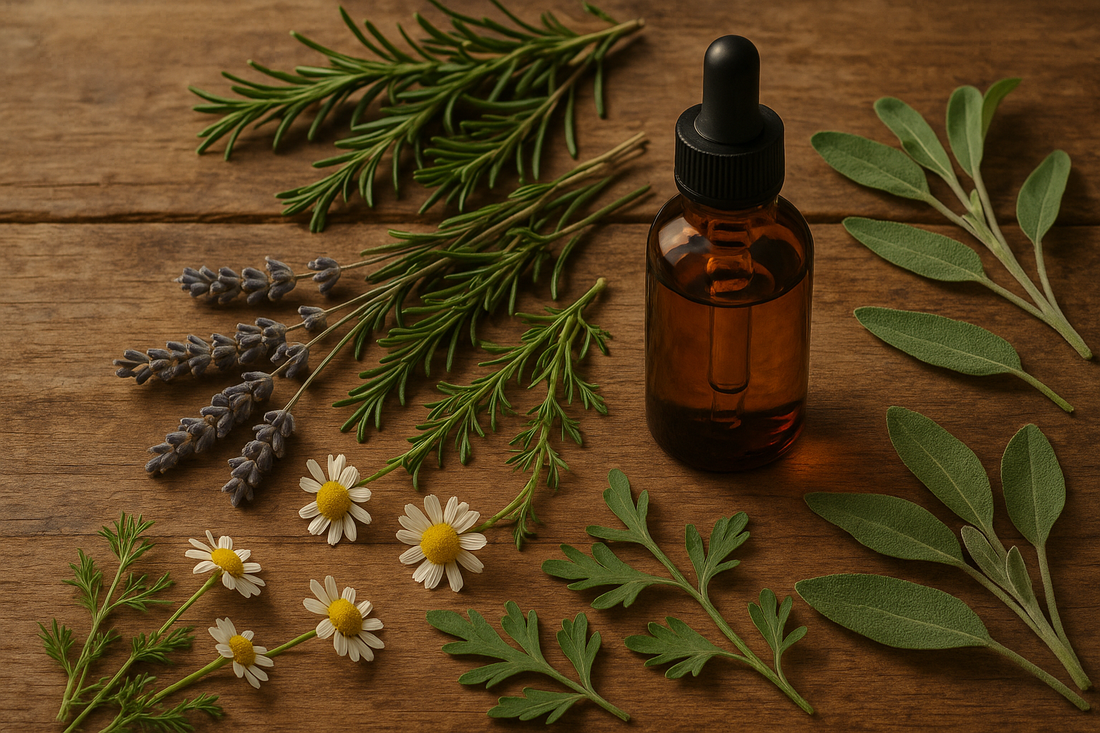
Herbs That Support Hormone Health
Share
Ashwagandha, Black Cohosh, Dong Quai, Licorice Root & Vitex
When hormones become imbalanced, the body doesn’t just send one signal—it sends many: mood swings, irregular cycles, fatigue, insomnia, weight fluctuations, and more. But rather than suppressing symptoms, herbal medicine works with your endocrine system to help restore internal communication and physiological rhythm.
At This Wombman, we’ve selected five powerful herbs for our Hormone Balance Tincture, each backed by a long history of traditional use and growing modern research. Together, they form a synergistic blend that nourishes your HPO (hypothalamic-pituitary-ovarian) axis and supports hormonal resilience across all life stages.
Let’s explore the science and spirit behind these herbal allies.
1. Ashwagandha (Withania somnifera)

Key Actions: Adaptogen, cortisol modulator, thyroid support
Ashwagandha is a revered herb in Ayurvedic medicine, often used to calm the nervous system and re-regulate cortisol, the body’s primary stress hormone. Chronically high cortisol disrupts progesterone and estrogen balance via the pregnenolone steal, affecting sleep, libido, and cycle regularity.
Research: A 2019 study published in Medicine found that Ashwagandha significantly reduced stress and serum cortisol levels in adults experiencing chronic stress. It has also been shown to support T3 and T4 hormone balance in subclinical hypothyroidism.
Ideal for: Burnout, cycle irregularity, anxiety, thyroid sluggishness
2. Black Cohosh (Actaea racemosa)

Key Actions: Phytoestrogenic, estrogen receptor modulator, menopausal support
Black cohosh contains triterpene glycosides that interact with estrogen receptors, particularly in the hypothalamus, which helps reduce vasomotor symptoms like hot flashes and night sweats in perimenopausal and menopausal women.
Research: A systematic review in The Journal of Women’s Health (2012) confirmed black cohosh's ability to reduce hot flashes and improve sleep quality without altering serum estrogen levels.
Ideal for: Menopause, perimenopause, estrogen fluctuations
3. Dong Quai (Angelica sinensis)

Key Actions: Blood tonic, menstrual regulator, estrogen-balancing
Often referred to as “female ginseng,” Dong Quai nourishes and improves circulation to the reproductive organs. It supports estrogen metabolism and is used to ease menstrual cramps, irregular cycles, and postpartum recovery.
Research: Studies suggest that Dong Quai has weak estrogenic activity and supports uterine tone. It’s also used to reduce dysmenorrhea and improve iron levels in women with heavy periods.
Ideal for: Painful periods, postpartum care, anemia, hormonal blood flow support
4. Licorice Root (Glycyrrhiza glabra)

Key Actions: Adrenal support, liver detoxifier, mild phytoestrogen
Licorice root acts as a gentle adaptogen and has the unique ability to enhance cortisol retention when levels are low, while also calming inflammation when levels are too high. It supports liver function, which is critical for estrogen detoxification and preventing estrogen dominance.
Research: A 2017 review in Steroids noted licorice’s phytoestrogenic compounds and their influence on estrogen and androgen receptors. It also shows promise in supporting PCOS symptoms.
Ideal for: Low energy, cycle length regulation, PCOS, liver support
5. Vitex (Vitex agnus-castus)

Key Actions: Pituitary modulator, progesterone booster, menstrual cycle balancer
Vitex works at the pituitary level to regulate luteinizing hormone (LH) and suppress excess prolactin, a common disruptor of ovulation. It indirectly raises progesterone, supporting a balanced luteal phase and more stable mood, fertility, and sleep.
Research: A double-blind study in BMJ (2001) showed that Vitex significantly reduced PMS symptoms over 3 cycles, including breast tenderness, irritability, and bloating.
Ideal for: PMS, irregular periods, luteal phase deficiency, fertility
A Synergistic Formula for the Modern Woman

While each of these herbs offers unique support, their synergistic combination is what makes the This Wombman Hormone Balance Tincture powerful. Together, they address the root systems that regulate hormones: the nervous system, liver, ovaries, and brain.
We use alcohol extraction to preserve the full spectrum of plant compounds, ensuring therapeutic potency and optimal absorption. Each drop is crafted to help your body remember its own natural rhythm.
When to Use Hormone Balance Tincture
Take daily (preferably in the morning) or during the luteal phase of your cycle if using for PMS and progesterone support. Can be used continuously or cycled, depending on your individual needs.
Always consult your provider, especially if you're on medications, are pregnant, or breastfeeding.
